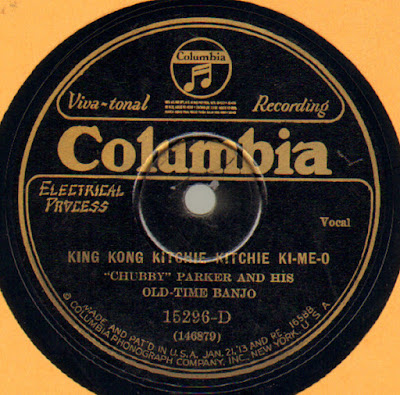Stealth, Simplicity, Subtext: The Glory of "Time Is Tight"
The rock instrumental is a curious species. It’s not that fine examples of the form are scarce (the Rhino compilations cup overflows). But apart from a few bands or artists who have made it their shtick—the Ventures, the James Taylor Quartet, Steve Vai, Mogwai—the rock instrumental is more the exception than the rule. Compare that to most other musical genres, popular and otherwise: jazz, classical, traditional, folk, all positively overflow with music sans lyrics. Like showtunes or hip-hop, rock ’n’ roll, it seems to me, is at its heart a vocal-driven form. It comes from the gut, if not the loins, and most of the time it’s got a song to sing (or howl) from there.
Still, all music has its constituent parts, and artists who isolate and drill down on them—I think of Les Paul and Mary Ford’s guitar-and-vocal tracking innovations, or Chic Gamine’s drum-and-vocal popscapes—hold special interest for the way they can uncover joys and oddities burbling under the music’s surface. Few unleashed more unlikely felicities and subtext from the basic elements of rock than the band that literally underpins the sound of much of mid-century American pop music, the Memphis quartet known on their own instrumental records as Booker T. & the MG’s.
As its name suggests, the Hammond organ of Booker T. Jones was in a sense the band's lead singer—it was the odd voice out among the traditional rock combo of bass, drums, and guitar, and did carry its share of the melodic weight. But what makes this band’s sound instantly arresting and lastingly listenable is its total quadraphonic equality (a non-incidental property, by the way, for an interracial band). These are four players not only in perfect sync but in ideal balance—there are no grandstanding solos, the fatal temptation of rock instrumentals, just an ideal four-way marriage of true musical minds, thinking out loud together.
No song typifies this elemental alchemy like “Time Is Tight,” a classic of compression and exultant simplicity, composed for a film soundtrack (and ultimately placed in Jules Dassin’s 1968 Black Power drama Uptight, in which a thrilling extended version plays under the film’s dramatic ending). The song is built on such basic material it could be an etude: First comes a C-major chord figure very close to the shape any amateur’s hands might form on the guitar’s lower strings (you can hear a similar figure everywhere from CCR’s “Down on the Corner” to Violent Femmes’ “Blister in the Sun,” though the clearest lift is in Squeeze’s “In Quintessence”). It's quickly doubled by bass, smacked by a sharp drum fill, and then, without fanfare, that faint organ wells up from the midrange, curling like a smoke ring through an insinuating 14-bar blues form.
No song typifies this elemental alchemy like “Time Is Tight,” a classic of compression and exultant simplicity, composed for a film soundtrack (and ultimately placed in Jules Dassin’s 1968 Black Power drama Uptight, in which a thrilling extended version plays under the film’s dramatic ending). The song is built on such basic material it could be an etude: First comes a C-major chord figure very close to the shape any amateur’s hands might form on the guitar’s lower strings (you can hear a similar figure everywhere from CCR’s “Down on the Corner” to Violent Femmes’ “Blister in the Sun,” though the clearest lift is in Squeeze’s “In Quintessence”). It's quickly doubled by bass, smacked by a sharp drum fill, and then, without fanfare, that faint organ wells up from the midrange, curling like a smoke ring through an insinuating 14-bar blues form.
The tempo and the playing are understated, even stately, all the better to give the dynamics room to build to the ecstatic G-D-G chord climax, and then, following a Duck Dunn bass walkdown and a consummately unflashy Al Jackson Jr. drum fill, to let them drop back down to the smoldering main theme. This is always a heart-catching moment, a favorite within a favorite (it's at 1:12 in the video above). All four band members are moving together in lockstep formation here, like a band doing exquisitely matched stage choreography. Even when guitarist Steve Cropper steps up at midsong for a guitar solo spotlight, his part maintains the song’s native simplicity and proportionality, as Booker T.’s organ and Dunn’s bass accompany his piercing lead with a mildly exuberant counterpoint along the song’s insistent offbeat rhythm.
Indeed, after some investigation, I think this is the song’s secret weapon, the thing that burrows it under the skin: its stealthily syncopated pulse. The opening guitar figure has this beat:
And the later guitar figure, accompanied by the bass and organ, is only a slight variation, with those tied eighth notes on the 2nd and 4th beat snagging up the metronomic momentum of the measures like artful little side steps in a march. It is a simple device, but it is as catchy as any melodic hook, in this case possibly moreso, given the song's relatively self-effacing, almost placeholder melody:
Let there be no doubt that rock music has achieved its own kind of beauty, in part by redrawing the boundaries of aural pleasure, just as surely as 20th-century composers redefined harmony and found the loveliness in dissonance. But “Time Is Tight” (alongside a handful of Booker T. essentials, like “Hip Hug-Her” and “Green Onions”) requires no expansion or reorientation of taste to apprehend its glories. It is all there for the hearing, with the immediacy of all pop but also the rich texture, the ineffable duende, of the greatest art.






Comments
Post a Comment